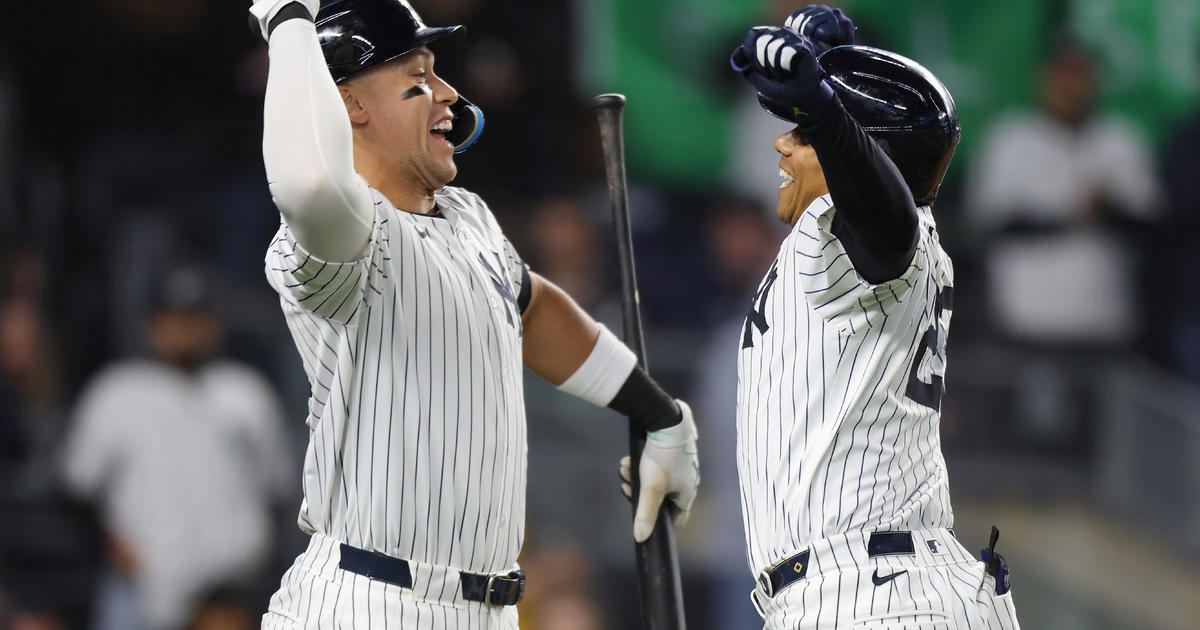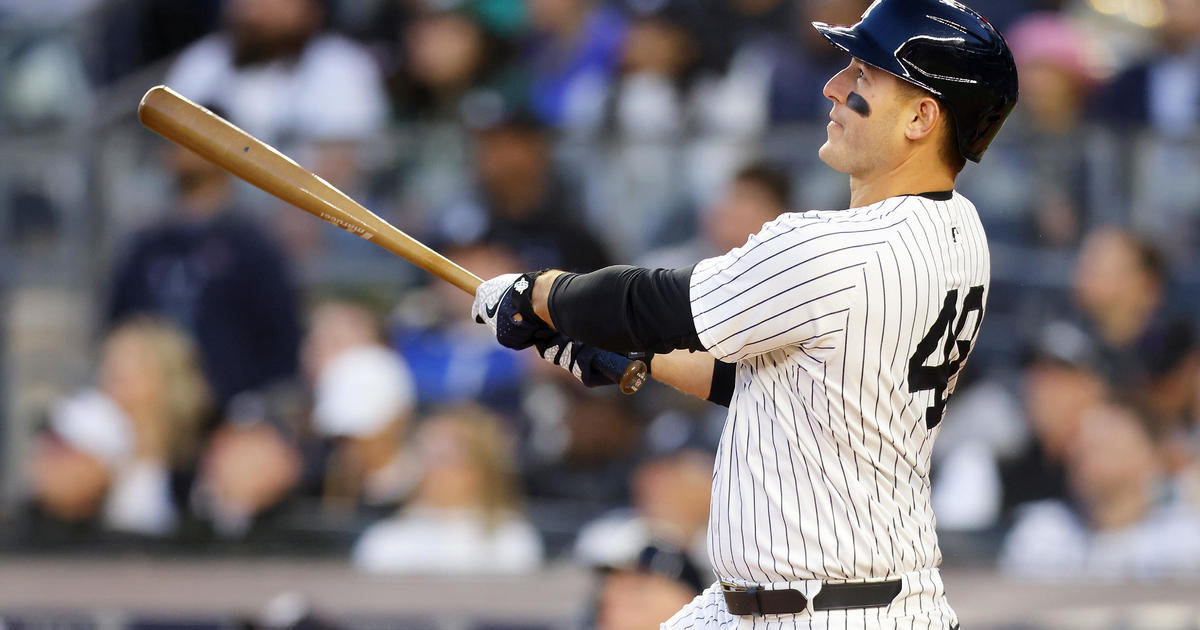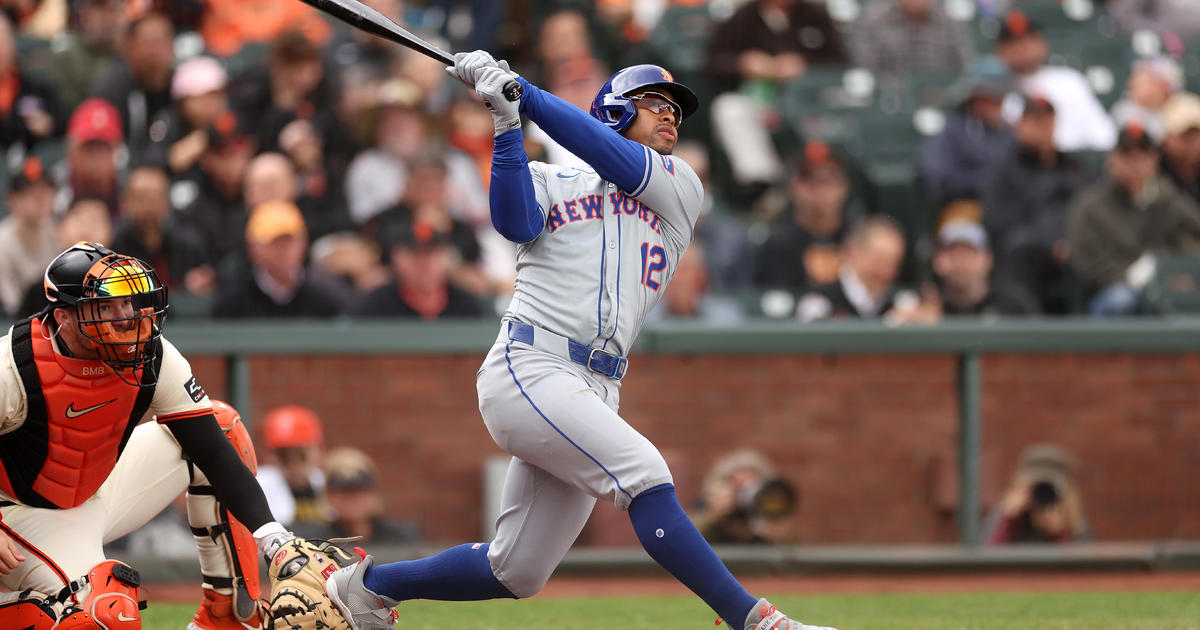Renewing THE Rivalry At Yankee Stadium
NEW YORK (AP) — It was 1946 and World War II was finally over, so it was OK to consider a college football game the biggest thing going on in the United States of America.
Back then, Notre Dame and Army were at the top of the sport. Their rivalry was THE rivalry. College football was still a regional game, but the Fighting Irish and Black Knights had national followings.
When they played on Nov. 9, 1946, at Yankee Stadium, Army was No. 1 and the two-time defending national champion. Notre Dame was No. 2. A standing-room-only crowd of about 75,000 packed the House that Ruth Built and Joe DiMaggio still called home that day to watch The Game of the Century.
"This was sort of a quintessential postwar American team," Notre Dame athletic director Jack Swarbrick said of the '46 Fighting Irish. "In the previous two years, the combined score of Notre Dame-Army was Army 107-0, because all our guys were in the service.
"The following year it was postwar America, the boys had come back home. In a sense, the game really represented that transition. America had returned to normal, Notre Dame had its football team back and its coach back."
The game matched four players who ended up winning the Heisman Trophy, two on each side, and two Hall of Fame coaches in Earl "Red" Blaik and Frank Leahy. And when it was over, not a single point had been scored.
Army 0, Notre Dame 0.
"It turned out to be kind of a dull game of the century," former Irish halfback Terry Brennan told The Associated Press earlier this week.
And yet, somehow, it's still a game that sticks in the American imagination, with echoes that resonate even 64 years later as Notre Dame and Army prepare to play for their 50th meeting — this time in the new Yankee Stadium on Saturday night.
It will be the first football game played at the two-year old ballpark and the 23rd time Notre Dame and Army have met in the Bronx.
"It was a natural," Swarbrick said. "You've got to celebrate this stuff or you lose it."
Some of the most memorable moments in Notre Dame's rich history have come when the Irish have played Army.
The first matchup between the teams was in 1913, a game called "the most significant victory in the history of Notre Dame football" by former AP sports writer Ken Rappoport in his book "Wake Up The Echoes." The Irish beat a powerful Army team 35-13 with coach Jesse Harper surprising the Cadets by having quarterback Gus Dorais frequently pass to end Knute Rockne.
The 1924 game at the Polo Grounds in New York produced one of the most famous pieces of sports writing in American history. The Irish won 13-7 and Grantland Rice began his story for the New York Herald Times this way:
"Outlined against a blue, gray October sky, the Four Horsemen rode again. In dramatic lore they are known as Famine, Pestilence, Destruction and Death. These are only aliases. Their real names are Stuhldreher, Miller, Crowley and Layden."
The 1928 Army-Notre Dame game was famous for Rockne, by then the Irish coach, urging his team to win one for the Gipper at halftime.
Notre Dame dominated the rivalry for years, but in 1944 and '45, with Leahy and many of Notre Dame's top players serving in the military, Army had its way with the Irish, winning 59-0 and 48-0.
Army came into the '46 game having won 25 straight with maybe the most famous backfield in the history of the college football. Doc Blanchard (Mr. Inside) had won the Heisman in 1945 and Glenn Davis (Mr. Outside) went on to win the Heisman in '46.
"The difficulty I had as a quarterback was deciding which one of those Heisman Trophy winners to give the ball to," former Army quarterback Arnold Tucker, a college football Hall of Famer himself, said in a telephone interview from his Miami home.
Notre Dame had welcomed back Leahy from the Navy. The coach had done some recruiting while in the service and among the players he brought to South Bend, Ind., was George Connor, a transfer from Holy Cross who went on to become the first Outland Trophy winner as the nation's top lineman in '46.
Johnny Lujack also returned to Notre Dame in 1946 after two years in the service. In 1947, he won the Heisman. The 1949 Heisman winner, end Leon Hart, was a freshman.
Both teams had romped through the competition on their way to Yankee Stadium. Army won its seven games by a combined 296-34. Notre Dame outscored its five opponents 177-18.
The Notre Dame faithful knew they had a team that could end Army's reign. Students sent postcards to Blaik and signed them SPATNC — Society to Prevent Army's Third National Championship.
The sun was peeking through the clouds at kickoff that chilly fall day in the Bronx. As the radio announcer said, "You couldn't get another person in here with a shoehorn."
The game quickly developed into a defensive struggle.
"I called for a play for Blanchard to run sort of off-tackle to the left and usually he'd plow right along with that ... he got thrown for losses," Tucker said. "(The Irish) were out there waiting for us."
Both coaches were cautious — though in one case, maybe not cautious enough.
Notre Dame's best scoring chance came in the second quarter after Lujack led a long drive to the Army 4. On fourth-and-2, Leahy, who equated field goals with failure, called for a running play and Bill Gompers was stopped short.
"I wish when we were down near the goal line we maybe should have kicked a field goal," Lujack said.
At a time when almost everybody played both ways, Lujack was intercepted three times by Tucker that day.
"Coach Leahy asked me why did I throw it to him and I said 'Because he was the only one open,'" Lujack said, pulling out a laugh line he's used more times than he can count.
But it wasn't necessarily a bad day for Lujack. From his defensive position, he made maybe the most famous tackle in Notre Dame history in the second half when he cut out Blanchard's legs near the sideline at the Irish 36. Lujack was the last line of defense between Blanchard and the end zone.
Army continued to drive after Lujack's TD-saving tackle, but Brennan intercepted Davis' halfback pass deep in Irish territory, ending the last scoring threat for either team.
"There's no satisfaction in a 0-0 game," Tucker said.
Both teams finished the season unbeaten, and neither played in bowls back then. Notre Dame was voted No. 1 in the final AP poll and Army finished second.
"When we used to battle Army," said Brennan, "they tried to beat the hell out of us and we'd try to do the same, but when the game was over there was great respect between the two schools."
Blaik called off the series with Notre Dame later that year, but they played once more in '47 at Notre Dame. The Irish won 27-7.
In 1957, the schools played again and they have met on and off ever since, with the Irish winning 14 of 15. The last Army victory was in 1958, when Pete Dawkins won the Heisman for Army.
Lujack and Dawkins will be honorary captains at Yankee Stadium on Saturday night.
The Notre Dame (5-5) and Army (6-4) programs that will square off are far from the powerhouses of the past. The Irish need a victory to become bowl eligible. The Cadets are having their best season in 14 years.
But for many, when the Irish and Black Knights play, it conjures up memories of a time when nothing — in sports or otherwise — was bigger.



